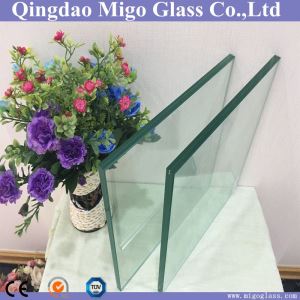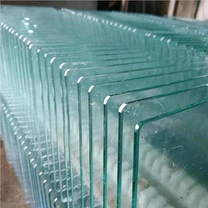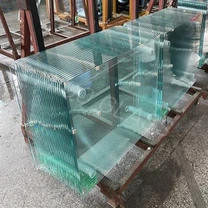When it comes to selecting the appropriate glass thickness for a particular application, there are a number of factors to consider. Glass is used in a variety of industries and settings, from residential windows and shower enclosures to commercial storefronts and safety barriers. Each of these applications requires a different type of glass, and selecting the right thickness is critical to ensure the glass performs safely, effectively, and aesthetically. This guide aims to provide insights into how to choose the right glass thickness for different applications, taking into account structural requirements, safety standards, design considerations, and practical functionality.
1. Factors Influencing Glass Thickness Selection
Choosing the right glass thickness depends on several key factors, including:
Load-Bearing Requirements: The thickness of glass directly impacts its strength and ability to support weight. Thicker glass is better suited for applications that require higher load-bearing capacity, such as glass railings, floors, or large windows.
Safety Considerations: In high-traffic or hazardous environments, safety is a primary concern. Thicker glass, especially tempered or laminated glass, is typically required for safety applications to reduce the risk of breakage and injury.
Glass Type and Treatment: Certain glass treatments, such as tempering or laminating, can enhance the strength of thinner glass, making it suitable for more demanding applications. The specific glass treatment can therefore influence the thickness required.
Aesthetic Preferences: In some applications, the visual impact of the glass is equally important as its functionality. Thicker glass tends to create a more substantial, high-end look, while thinner glass may be preferred for minimalist designs.
Environmental and Climate Factors: The environment in which the glass is used also plays a role in determining the appropriate thickness. For example, glass exposed to harsh weather conditions or significant temperature fluctuations might require thicker glass to withstand the pressure.
2. Common Glass Applications and Recommended Thickness
Let's explore how glass thickness varies for different applications:
2.1 Residential Windows
Residential windows are one of the most common uses of glass, and the thickness of the glass plays a role in both its energy efficiency and safety.
Standard Thickness: The most commonly used glass thickness for residential windows is 3mm to 6mm (1/8 inch to 1/4 inch). This thickness is suitable for single-pane glass or double-glazed windows, where the insulating layer between the panes of glass provides energy efficiency.
Double or Triple Glazing: In double or triple-glazed windows, the individual panes are typically 4mm to 6mm thick, with a gap between the panes filled with air or gas for improved insulation.
Impact Resistance: In areas that are prone to storms, or for ground-floor windows, thicker glass (6mm or more) may be used for added impact resistance. Laminated glass, which consists of two layers of glass with a plastic interlayer, is commonly used in such applications.
2.2 Shower Enclosures
Glass shower enclosures require both aesthetic appeal and durability. The thickness of the glass in shower enclosures is critical for both safety and style.
Standard Thickness: For framed shower enclosures, the typical glass thickness is 3/16 inch (5mm) to 1/4 inch (6mm). These thicknesses provide the necessary strength for smaller, enclosed spaces, particularly when the glass is framed by metal.
Frameless Shower Doors: Frameless shower doors, which are highly popular in modern bathroom designs, often require thicker glass for structural stability. The recommended thickness for frameless glass shower doors is typically 3/8 inch (10mm) to 1/2 inch (12mm). Thicker glass helps ensure the door remains stable and secure without the need for a bulky frame.
Laminated Glass: In areas with higher safety concerns, such as public restrooms or homes with children, laminated glass is often used. Laminated glass is made of two layers of glass with a plastic interlayer, which prevents the glass from shattering upon impact.
2.3 Glass Railings and Balustrades
Glass railings are commonly used in both residential and commercial spaces, especially on staircases, balconies, and pool areas. The thickness of the glass used in railings is essential for both structural integrity and safety.
Standard Thickness: Glass railings are typically made from tempered glass, which is much stronger than ordinary annealed glass. The recommended thickness for glass railings is usually 1/4 inch (6mm) to 1/2 inch (12mm), depending on the height and location of the railing.
Load-Bearing Capacity: For higher balustrades or where the glass is intended to bear more weight (such as on balconies or decks), glass thickness may need to be increased to 3/8 inch (10mm) or even 1/2 inch (12mm). The increased thickness ensures the glass can withstand external forces such as wind pressure or physical impact.
Glass Clamps and Fittings: The type of fittings used to secure the glass also influences the necessary thickness. Frameless glass railings are typically supported by sturdy glass clamps, which require thicker glass to ensure the system remains stable and secure.
2.4 Glass Floors and Canopies
Glass floors and canopies are used in high-end architectural projects to create dramatic effects and allow natural light to penetrate spaces below. Because these applications are subject to significant load-bearing requirements, thicker glass is often required.
Standard Thickness: Glass floors typically use laminated glass with a thickness ranging from 1/2 inch (12mm) to 3/4 inch (19mm) or more, depending on the size of the floor panel and the expected load. Laminated glass is often preferred because it holds together even if it cracks.
Glass Canopies: Glass canopies used in architecture to shelter entryways or walkways generally use glass that is 1/4 inch (6mm) to 3/8 inch (10mm) thick. The glass is typically tempered or laminated for added strength, especially when the canopy is subjected to weather conditions like snow or high winds.
2.5 Commercial Glass Storefronts and Curtain Walls
In commercial applications, the glass used in storefronts and curtain walls is typically designed to meet structural and aesthetic standards while providing insulation and soundproofing.
Standard Thickness: For commercial glass applications such as storefronts and curtain walls, the thickness of the glass generally ranges from 1/4 inch (6mm) to 1/2 inch (12mm), depending on the size of the glass panels and the desired level of insulation.
Double Glazing: In areas where energy efficiency is a concern, especially in large commercial buildings, double-glazed glass panels (often with a thickness of 6mm or more for each layer) are used to improve thermal performance and soundproofing.
Safety and Impact Resistance: In locations where security and impact resistance are a priority, such as in retail stores in high-traffic areas, laminated glass or security glass is used. This glass is typically thicker, ranging from 1/2 inch (12mm) to 1 inch (25mm), to withstand potential impacts or break-ins.
2.6 Mirrors and Decorative Glass
Mirrors and decorative glass pieces, such as glass tabletops, display cases, or wall art, require glass that is both visually appealing and capable of withstanding normal wear and tear.
Standard Thickness: Mirrors and decorative glass generally use glass that is 1/8 inch (3mm) to 1/4 inch (6mm) thick. Thinner glass is often used for applications like mirrors because it provides a smooth, reflective surface without being overly bulky.
Safety Mirrors: For safety reasons, mirrors used in public spaces or homes with children may require laminated glass, which prevents shards from scattering if the glass breaks. The thickness of laminated mirror glass is typically 1/4 inch (6mm) to 3/8 inch (10mm).
Conclusion
Choosing the right glass thickness for different applications is crucial to ensuring the performance, safety, and aesthetics of the installation. Whether you are designing a modern bathroom with frameless shower doors, installing a glass railing to enhance the look of a staircase, or outfitting a commercial building with large glass windows, understanding the necessary thickness for each application is key. By considering the factors outlined above, including load-bearing requirements, safety standards, and the desired aesthetic, you can make an informed decision and select the right glass for your project. Ultimately, the right thickness will provide the durability, strength, and visual appeal needed to create a functional and beautiful design.






